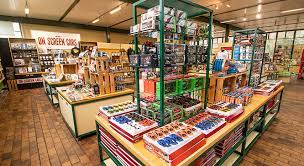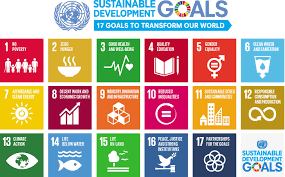Consultants: The Experts You Need for Success
In today’s fast-paced and complex business world, the role of consultants has become increasingly vital. Whether you are a small start-up or a large multinational corporation, consultants offer valuable expertise and guidance to help you navigate challenges, optimize operations, and achieve your goals.
So, what exactly do consultants do? In essence, they are professionals who bring specialized knowledge and skills to assist businesses in solving problems and improving performance. They act as unbiased advisors, providing objective insights and recommendations based on their experience and industry best practices.
One of the key benefits of working with consultants is their ability to offer an outside perspective. Often, businesses can become too entrenched in their own processes and lose sight of potential areas for improvement. Consultants bring fresh eyes to the table, identifying inefficiencies or untapped opportunities that may have gone unnoticed.
Moreover, consultants possess a deep understanding of specific industries or functional areas. Whether it’s finance, marketing, operations, human resources, or technology, they have honed their expertise through years of hands-on experience. This specialized knowledge allows them to provide tailored solutions that address your unique challenges.
Another advantage of hiring consultants is their ability to provide temporary support during times of change or transition. For example, if you are implementing a new software system or undergoing a merger/acquisition, consultants can guide you through the process smoothly. They can develop implementation plans, train employees on new processes, and ensure a seamless transition without disrupting day-to-day operations.
Furthermore, working with consultants can be cost-effective compared to hiring full-time employees for short-term projects. You can tap into their expertise without incurring long-term salary and benefit expenses. Consultants also bring efficiency by focusing solely on the project at hand without being distracted by other internal responsibilities.
Collaborating with consultants is not only limited to problem-solving; they can also help businesses seize new opportunities. They stay up-to-date with market trends, emerging technologies, and industry best practices. By leveraging their insights, you can make informed decisions and stay ahead of the competition.
However, it’s important to choose the right consultants for your needs. Look for professionals who have a proven track record in your industry or area of focus. Check their references and client testimonials to ensure they have delivered results in the past. Additionally, effective communication and a strong working relationship are crucial for a successful collaboration.
In conclusion, consultants play a crucial role in today’s business landscape. Their expertise, objectivity, and outside perspective can help businesses overcome challenges, optimize operations, and seize opportunities. By leveraging their knowledge and skills, you can position your business for success in an ever-evolving marketplace. So why not consider bringing in consultants to unlock your full potential?
9 Benefits of Hiring Consultants for Your Business in the UK
- Access to specialist expertise – Consultants can provide access to specific skills and experience that may not be available internally.
- Objectivity – Consultants can bring a fresh perspective and objectivity to projects, helping to identify areas of improvement or potential solutions.
- Cost savings – Engaging consultants can save money in the long-term by providing cost-effective solutions that are tailored for your business needs.
- Increased efficiency – By bringing in external resources, consultants can help to streamline processes, improve workflow and increase productivity levels within the organisation.
- Innovation – Consultants are often well-versed in the latest trends and technologies which they can use to bring new ideas into an organisation’s operations or strategies..
- Flexibility – Utilising consultants allows organisations to adjust their staff size as needed without having to commit long-term resources or take on additional costs associated with hiring full-time employees..
- Independence – Consultants aren’t bound by organisational politics or internal hierarchies so they are able to focus solely on delivering results for their clients without any conflicts of interest..
- Accountability – As independent contractors, consultants have a vested interest in ensuring successful completion of projects as it directly affects their reputation and future opportunities..
- Scalability – Consulting services allow businesses to scale up quickly when needed without having the hassle of managing additional staff members or training new hires
Challenges with Consultants: High Costs, Lack of Commitment, Lack of Knowledge, and Overdependence
- High Costs
- Lack of Commitment
- Lack of Knowledge
- Overdependence
Access to specialist expertise – Consultants can provide access to specific skills and experience that may not be available internally.
Access to Specialist Expertise: Unlocking the Power of Consultants
In the realm of business, it’s essential to have the right skills and experience to tackle complex challenges effectively. However, sometimes an organization may lack the internal resources or expertise required for a particular project or initiative. This is where consultants step in, offering access to specialist knowledge and skills that can make all the difference.
Consultants bring a wealth of experience and expertise from various industries and functional areas. They have honed their skills through years of hands-on work, tackling similar problems and finding innovative solutions. By engaging consultants, businesses gain immediate access to this specialized knowledge without having to build it internally from scratch.
One of the significant advantages of working with consultants is their ability to provide specific skills that may not be available within the organization. Whether it’s implementing a new technology system, conducting market research, or developing a marketing strategy, consultants possess the necessary know-how and can hit the ground running.
Moreover, consultants often bring a fresh perspective to the table. They are not bound by internal biases or preconceived notions about how things should be done. This objectivity allows them to analyze situations objectively and propose creative solutions that may have been overlooked internally.
Additionally, consultants stay up-to-date with industry trends and best practices. They continuously invest in professional development and are well-versed in emerging technologies or methodologies relevant to their field. By tapping into their knowledge base, businesses can gain valuable insights and ensure they are staying ahead of their competition.
Another advantage of accessing specialist expertise through consultants is flexibility. Businesses can engage consultants on a project-by-project basis or for a specific duration as needed. This flexibility allows organizations to scale resources up or down based on their requirements without any long-term commitments.
Furthermore, working with external experts can also enhance internal capabilities over time. Consultants often transfer knowledge and skills during their engagement, empowering internal teams with new tools and approaches that can be applied long after the project is completed. This knowledge transfer can have a lasting impact on the organization’s ability to tackle similar challenges in the future.
In conclusion, accessing specialist expertise through consultants provides businesses with a competitive edge. Their specific skills, experience, and fresh perspective can help organizations overcome hurdles and achieve their goals more efficiently. By leveraging the knowledge and skills of these external experts, businesses can tap into a wellspring of expertise that may not be available internally. So, consider harnessing the power of consultants to unlock your organization’s full potential.
Objectivity – Consultants can bring a fresh perspective and objectivity to projects, helping to identify areas of improvement or potential solutions.
Objectivity: The Fresh Perspective Consultants Bring
In the dynamic world of business, it’s easy to get caught up in the day-to-day operations and lose sight of potential areas for improvement. This is where consultants shine with their invaluable trait of objectivity. By bringing a fresh perspective to projects, they can help identify areas of improvement or potential solutions that might have gone unnoticed.
When businesses face challenges or want to optimize their operations, it can be difficult to see the bigger picture from within. Consultants, however, approach projects with an unbiased viewpoint. They are not constrained by internal politics or preconceived notions, allowing them to objectively analyze the situation and offer insights that may have been overlooked.
This objectivity is particularly valuable when it comes to identifying areas for improvement. Sometimes, businesses become so accustomed to certain processes or practices that they fail to recognize inefficiencies or outdated methods. Consultants, as external experts, can assess existing systems and procedures with a fresh set of eyes. They bring a wealth of industry knowledge and best practices which they can apply to your specific situation.
Moreover, consultants are skilled at asking probing questions and challenging assumptions. By doing so, they encourage critical thinking within your organization and help uncover underlying issues that may be hindering progress. Their objective approach fosters an environment where creative solutions can emerge.
Another advantage of consultant objectivity is their ability to facilitate change management efforts. When implementing new strategies or initiatives, internal resistance can often arise due to fear or uncertainty. Consultants act as neutral facilitators who can objectively communicate the benefits of change and address concerns from various stakeholders. Their impartiality helps build trust and credibility among employees during times of transition.
Furthermore, consultants bring diverse experiences from working with different clients across various industries. This exposure allows them to draw upon a wide range of perspectives and successful strategies when tackling your project. They are not limited by internal biases but rather leverage their collective knowledge base to tailor solutions specifically to your needs.
In conclusion, the objectivity that consultants bring is a powerful asset for businesses seeking improvement and innovation. Their fresh perspective enables them to identify areas of improvement or potential solutions that may have been overlooked internally. By leveraging their expertise, experience, and unbiased viewpoint, consultants can help businesses overcome challenges and embrace new opportunities. So, if you find yourself facing a complex problem or seeking ways to enhance your operations, consider engaging the services of a consultant to benefit from their invaluable objectivity.
Cost savings – Engaging consultants can save money in the long-term by providing cost-effective solutions that are tailored for your business needs.
In today’s competitive business landscape, finding ways to cut costs without compromising quality is essential. This is where consultants can make a significant impact. By hiring consultants, businesses can tap into their expertise and experience to find cost-effective solutions that are specifically tailored to their unique needs.
One of the key advantages of working with consultants is their ability to identify inefficiencies and areas for improvement within your organization. They have a fresh perspective and can objectively assess your operations, processes, and systems. By conducting thorough analyses, they can pinpoint areas where costs can be reduced or eliminated without sacrificing productivity or quality.
Consultants bring a wealth of industry knowledge and best practices to the table. They have worked with various clients across different sectors, which has given them exposure to a wide range of strategies and approaches. This breadth of experience allows them to identify innovative cost-saving measures that may not have been considered internally.
Moreover, consultants have access to benchmarking data and industry standards. They can compare your performance against similar organizations and identify opportunities for cost savings based on industry norms. This insight enables them to recommend targeted strategies that align with your business objectives while keeping costs in check.
Another way consultants help save money is by providing temporary support during peak periods or specific projects. Instead of hiring additional full-time employees, which comes with long-term salary commitments and benefits, businesses can engage consultants on a project basis. This flexibility allows you to access specialized skills when needed without incurring unnecessary expenses during slower periods.
Furthermore, consultants bring efficiency by focusing solely on the project at hand. They are not burdened by internal distractions or competing priorities within the organization. As a result, they can dedicate their time and energy towards delivering results quickly and effectively.
It’s important to note that while there may be an upfront investment in hiring consultants, the long-term cost savings can outweigh the initial expense. By implementing their recommendations and streamlining operations, businesses can achieve sustainable cost reductions that have a positive impact on their bottom line.
In conclusion, engaging consultants can lead to significant cost savings for businesses. Their expertise, industry knowledge, and objective perspective enable them to identify inefficiencies and provide tailored solutions that optimize costs without compromising quality. By leveraging their skills, businesses can achieve long-term financial benefits while staying competitive in today’s challenging market.
Increased efficiency – By bringing in external resources, consultants can help to streamline processes, improve workflow and increase productivity levels within the organisation.
Increased Efficiency: Streamlining Processes and Boosting Productivity with Consultants
In today’s competitive business environment, efficiency is key to staying ahead of the game. That’s where consultants come in. By bringing in external resources, consultants can help organisations streamline processes, improve workflow, and ultimately increase productivity levels.
One of the main advantages of working with consultants is their ability to identify inefficiencies within existing processes. They have a fresh perspective and can objectively assess the current workflow, pinpointing areas that may be causing bottlenecks or wasting valuable time and resources. By analysing each step of the process, consultants can suggest improvements or implement new strategies to streamline operations.
Consultants bring a wealth of experience from working with various clients across different industries. This means they have encountered similar challenges and have developed effective solutions along the way. Leveraging this expertise, they can introduce best practices and industry standards that are tailored to your specific needs.
Moreover, consultants are skilled at implementing change within organisations. They understand that change can be met with resistance from employees who are accustomed to certain ways of doing things. However, their objective viewpoint allows them to communicate the benefits of new processes effectively. They work closely with teams to ensure a smooth transition, providing training and support along the way.
By streamlining processes and improving workflow, consultants help eliminate unnecessary steps or redundancies that may hinder productivity. This leads to increased efficiency as employees can focus on value-added tasks rather than being bogged down by administrative burdens or inefficient procedures.
Additionally, consultants bring fresh ideas and innovative approaches that may not have been considered internally. Their diverse experiences allow them to think outside the box and introduce creative solutions that drive productivity gains. They may suggest implementing new technologies or automation tools that can simplify tasks and save time.
Furthermore, working with consultants often brings a sense of urgency and accountability to an organisation’s projects or initiatives. With clear goals and deadlines in place, they ensure that everyone involved stays on track and works towards achieving desired outcomes. This focus on results can greatly enhance productivity levels within the organisation.
In conclusion, consultants offer a valuable advantage when it comes to increasing efficiency in organisations. Their ability to streamline processes, improve workflow, and boost productivity is unmatched. By leveraging their expertise and outside perspective, businesses can optimise operations and stay competitive in today’s fast-paced business landscape. So, consider bringing in consultants to unlock your organisation’s full potential and drive efficiency to new heights.
Innovation – Consultants are often well-versed in the latest trends and technologies which they can use to bring new ideas into an organisation’s operations or strategies..
Innovation: How Consultants Bring Fresh Ideas to the Table
In today’s rapidly evolving business landscape, innovation is key to staying competitive and relevant. This is where consultants excel, as they are often well-versed in the latest trends and technologies. Their ability to bring new ideas into an organization’s operations or strategies can be a game-changer.
Consultants have their finger on the pulse of industry developments and emerging technologies. They continuously update their knowledge base to stay ahead of the curve. This allows them to identify innovative solutions that can transform your business processes and drive growth.
One of the advantages of working with consultants is their ability to introduce fresh perspectives. They bring a wealth of experience from working with various clients across different industries. This diversity of knowledge enables them to draw upon successful strategies implemented elsewhere and adapt them to suit your specific needs.
Furthermore, consultants are skilled at identifying untapped opportunities within your organization. They can spot areas where innovation can make a significant impact, whether it’s streamlining operations, improving customer experiences, or developing new products/services.
Consultants also have the advantage of being objective observers. They are not bound by internal biases or preconceived notions about how things should be done. This allows them to challenge existing processes and propose innovative alternatives that may have been overlooked.
Moreover, consultants possess strong analytical skills that enable them to assess your current operations objectively. By conducting thorough analyses, they can identify inefficiencies or bottlenecks that hinder innovation within your organization. They then develop tailored strategies and action plans that align with your goals while incorporating innovative practices.
In addition, consultants often facilitate workshops or brainstorming sessions where they encourage creativity and out-of-the-box thinking among employees. By creating an environment conducive to innovation, they help unlock the potential within your team and foster a culture of continuous improvement.
Working with consultants also provides access to their extensive networks and contacts in various industries. These connections can be valuable when seeking partnerships, collaborations, or expert advice. Consultants can leverage their relationships to bring in external expertise or explore innovative joint ventures that can propel your organization forward.
In conclusion, consultants are a valuable resource when it comes to driving innovation within your organization. Their knowledge of the latest trends and technologies, combined with their fresh perspectives and analytical skills, can help identify untapped opportunities and transform your operations. By collaborating with consultants, you can infuse new ideas and approaches into your strategies, positioning your business at the forefront of innovation in your industry.
Flexibility – Utilising consultants allows organisations to adjust their staff size as needed without having to commit long-term resources or take on additional costs associated with hiring full-time employees..
Flexibility: The Key Advantage of Hiring Consultants
In today’s dynamic business environment, flexibility is a crucial factor for success. This is where consultants truly shine. By utilising consultants, organisations gain the ability to adjust their staff size as needed without committing to long-term resources or incurring additional costs associated with hiring full-time employees.
One of the significant advantages of working with consultants is the flexibility they offer. Unlike hiring permanent employees, consultants can be engaged on a project-by-project basis or for a specific duration. This means that when you face fluctuations in workload or require expertise for a limited period, you can easily scale your team up or down without any long-term commitments.
Imagine launching a new product or service that requires additional support during its initial stages. Instead of hiring full-time employees and potentially facing the challenge of downsizing later on, you can bring in consultants who possess the necessary skills and experience to help you through this critical phase. Once the project is completed or your workload decreases, you can seamlessly disengage from their services without any lingering obligations.
Additionally, by leveraging consultants’ expertise for short-term projects, organisations can tap into specialised knowledge without incurring the costs associated with training existing staff members. This not only saves valuable time but also ensures that projects are executed efficiently by professionals who are well-versed in their respective fields.
The flexibility provided by consultants also allows organisations to adapt quickly to changing market conditions. In times of uncertainty or economic downturns, businesses may need to reduce costs and streamline operations swiftly. Consultants provide an ideal solution as they can be engaged temporarily to address specific challenges without burdening the organisation with long-term financial commitments.
Moreover, when faced with sudden growth opportunities or unexpected demands, organisations can swiftly expand their teams by bringing in consultants who possess the required skills and experience. This enables businesses to seize opportunities promptly without being constrained by internal resource limitations.
By embracing flexibility through consultant engagements, organisations can optimise their operations, respond to market changes efficiently, and manage costs effectively. It allows them to maintain agility and adaptability in an ever-evolving business landscape.
In conclusion, the flexibility offered by hiring consultants is a significant advantage for organisations. It enables them to adjust their staff size as needed without committing long-term resources or taking on additional costs associated with hiring full-time employees. By utilising consultants strategically, businesses can navigate through fluctuations in workload, tap into specialised expertise, and swiftly respond to market dynamics. Embracing flexibility through consultant engagements is a smart move for organisations seeking to thrive in today’s fast-paced business world.
Independence – Consultants aren’t bound by organisational politics or internal hierarchies so they are able to focus solely on delivering results for their clients without any conflicts of interest..
Independence: The Power of Unbiased Guidance from Consultants
In the world of business, internal politics and hierarchies can sometimes hinder progress and decision-making. That’s where consultants step in, offering a unique advantage: independence. By being free from organizational politics and conflicts of interest, consultants can focus solely on delivering results for their clients.
One of the key benefits of working with consultants is their ability to provide unbiased guidance. Unlike internal employees who may be influenced by personal agendas or internal dynamics, consultants offer an objective perspective. They are not bound by the constraints of office politics or internal hierarchies, allowing them to provide impartial advice based solely on what is best for your business.
This independence enables consultants to ask the tough questions that others may shy away from. They can challenge existing assumptions, processes, and strategies without fear of repercussions. By critically examining your business operations, they can identify areas for improvement and propose innovative solutions that may have been overlooked internally.
Moreover, consultants bring a fresh set of eyes to your organization. They are not burdened by preconceived notions or biases that can often cloud judgment within a company. This objectivity allows them to see opportunities and potential pitfalls that may have gone unnoticed by those immersed in day-to-day operations.
Another advantage of consultant independence is their ability to act as a neutral party during sensitive situations. When making difficult decisions or implementing changes that may affect employees or departments, having an external consultant can help mitigate potential conflicts. Their unbiased stance helps foster open communication and ensures that decisions are made based on merit rather than personal interests.
Furthermore, consultants are not beholden to any specific department or individual within your organization. This lack of allegiance allows them to work collaboratively with various stakeholders without favoritism or bias. They can bridge gaps between different teams and facilitate effective communication across departments.
By engaging independent consultants, you gain access to a wealth of expertise without any hidden agendas or conflicts of interest. Their sole focus is on delivering results for their clients, ensuring that their recommendations are based purely on what will benefit your business.
In conclusion, the independence of consultants is a valuable asset for any organization seeking unbiased guidance and objective insights. By being free from internal politics and hierarchies, consultants can provide fresh perspectives, challenge the status quo, and offer innovative solutions. Their neutrality fosters open communication and ensures that decisions are made in the best interest of your business. So, consider harnessing the power of consultant independence to drive your organization towards success.
Accountability – As independent contractors, consultants have a vested interest in ensuring successful completion of projects as it directly affects their reputation and future opportunities..
Accountability: The Key Strength of Consultants
When it comes to hiring consultants, one of their standout qualities is their inherent sense of accountability. As independent contractors, consultants have a vested interest in ensuring the successful completion of projects, as it directly affects their reputation and future opportunities.
Unlike regular employees who may have multiple responsibilities within an organization, consultants are solely focused on delivering results for their clients. They understand that their success is measured by the outcomes they achieve and the value they bring to the table. This creates a strong sense of accountability that drives them to go above and beyond to meet client expectations.
The accountability of consultants stems from the fact that they are not just temporary team members but trusted advisors. They are hired for their expertise and experience in specific areas, making them responsible for delivering tangible results within defined timelines. This responsibility is not taken lightly by consultants, as they know that their professional reputation is at stake.
The direct connection between project success and a consultant’s reputation ensures a high level of commitment and dedication. They invest time and effort in understanding your unique business challenges, conducting thorough analyses, and developing tailored strategies to address them effectively. Their goal is not only to meet project objectives but also to exceed client expectations.
Moreover, accountability drives consultants to maintain open lines of communication with clients throughout the project lifecycle. They provide regular updates on progress, seek feedback, and address any concerns promptly. This transparency allows clients to have full visibility into the consultant’s work and ensures alignment with project goals.
Another aspect that enhances accountability is the fact that consultants operate in a competitive market. Their success depends on building a strong track record and establishing a solid reputation within their industry or niche. Positive client testimonials, referrals, and repeat business are essential for sustaining their consultancy practice.
This competitive landscape compels consultants to consistently deliver exceptional results. They understand that satisfied clients are more likely to recommend their services or engage them for future projects. Therefore, they are driven by a genuine desire to achieve success for their clients, as it directly impacts their own professional growth and opportunities.
In conclusion, accountability is a significant strength of consultants. Their status as independent contractors fosters a strong sense of responsibility and commitment to project success. Consultants understand that their reputation and future opportunities depend on delivering tangible results and exceeding client expectations. By hiring consultants, you can be confident that they will take ownership of your project and work diligently to achieve the desired outcomes.
Scalability – Consulting services allow businesses to scale up quickly when needed without having the hassle of managing additional staff members or training new hires
Scalability: The Key Advantage of Consulting Services
In the dynamic and ever-changing business world, the ability to scale up quickly is a crucial factor for success. This is where consulting services truly shine, offering businesses the flexibility to expand their operations without the burdensome task of managing additional staff members or training new hires.
One of the primary advantages of working with consultants is their ability to provide scalable solutions. Whether you need to ramp up production, expand into new markets, or launch a new product line, consultants can help you navigate these growth opportunities seamlessly. They bring in their expertise and resources to support your expansion plans without requiring long-term commitments.
By engaging consultants during periods of growth, businesses can tap into a wealth of knowledge and experience without the need for extensive internal hiring processes. Consultants are already equipped with the skills necessary to tackle specific projects or initiatives, allowing you to capitalize on market opportunities swiftly.
The scalability offered by consulting services extends beyond just project-based work. Consultants can also assist in streamlining operations and improving efficiency within your existing workforce. They can identify areas where automation or process optimization can be implemented, enabling your team to handle increased workloads effectively.
Moreover, consultants offer a fresh perspective that can challenge conventional thinking within your organization. Their objective viewpoint allows them to identify potential obstacles or bottlenecks that may hinder scalability. By addressing these issues proactively, consultants help pave the way for smoother expansion and growth.
Another significant advantage of leveraging consulting services for scalability is cost-effectiveness. Rather than hiring additional full-time employees who may not be needed once the growth phase subsides, consultants offer a flexible and cost-efficient solution. You only pay for their services when you require them, saving on long-term salary and benefit expenses.
Additionally, working with consultants allows businesses to access a diverse pool of talent and expertise. Consultants often have extensive experience working across various industries and sectors, bringing in different perspectives and best practices that can be tailored to your specific needs. This breadth of knowledge helps ensure that your scalability efforts are well-informed and aligned with industry standards.
In conclusion, the scalability offered by consulting services is a significant advantage for businesses seeking growth and expansion. By partnering with consultants, you can tap into their expertise, resources, and objective insights without the need for extensive internal hiring or training. This flexibility allows you to seize opportunities swiftly and efficiently, positioning your business for success in a rapidly evolving marketplace. So, consider the power of consultants when it comes to scaling up your operations effectively.
High Costs
High Costs: Evaluating the Value of Consultants
When it comes to hiring consultants, one aspect that businesses need to consider is the potential high costs involved. While consultants can bring valuable expertise and insights, their fees may not always align with the perceived value they offer.
It is important to acknowledge that consultants often charge premium rates for their services. This can be attributed to several factors, including their specialized knowledge, years of experience, and the demand for their skills in the market. However, it is essential for businesses to carefully evaluate whether the benefits they receive from consultants justify the costs incurred.
One potential concern with high consultancy fees is that they may not always result in a proportional return on investment. Businesses should carefully assess whether the expected outcomes and value provided by consultants align with the financial resources allocated to them. It’s crucial to conduct a cost-benefit analysis and weigh the potential gains against the expenses involved.
Moreover, businesses should also consider alternative options before engaging consultants. Sometimes, internal resources or existing employees may possess similar skills or knowledge that could be utilized effectively with proper training or development programs. This approach can help mitigate costs while still achieving desired results.
Another consideration is ensuring transparency in fee structures and deliverables when working with consultants. Clearly defining project scopes, objectives, timelines, and expectations can help both parties establish a mutual understanding of what will be delivered for the agreed-upon fees. This transparency fosters trust and ensures that there are no surprises regarding costs along the way.
Furthermore, businesses should actively seek out cost-effective consulting solutions without compromising on quality. Conducting thorough research and exploring multiple options can help identify reputable consultants who offer competitive rates without sacrificing expertise or results.
Ultimately, while high costs can be seen as a con of working with consultants, it is important not to dismiss their value outright. Consultants bring specialized knowledge and experience that can provide significant benefits to businesses seeking external expertise. By carefully assessing costs against potential gains and exploring alternative options, businesses can make informed decisions that align with their budget and objectives.
In conclusion, the high costs associated with consultants should be evaluated in relation to the value they offer. By conducting a thorough analysis, seeking transparency in fee structures, considering alternative options, and researching competitive rates, businesses can make informed decisions that balance their financial resources with the expertise needed to achieve their goals.
Lack of Commitment
The Lack of Commitment: A Con of Consultants
While consultants bring a wealth of expertise and benefits to businesses, it is important to acknowledge that there are potential downsides as well. One such con is the lack of commitment that can arise from their project-based nature.
Consultants are typically hired for specific projects or assignments, with a defined timeline and scope. Once the project is completed, there is no guarantee that they will remain with the company for an extended period. This lack of continuity can sometimes lead to challenges in maintaining a consistent approach and long-term commitment to the job at hand.
When consultants come and go, it can disrupt the flow of work within a company. They may not have the same level of investment or understanding of the organization’s culture, values, or long-term objectives compared to permanent employees. As a result, they may not have the same sense of ownership or dedication towards achieving sustainable results beyond their immediate project goals.
Furthermore, as consultants move from one project to another, they may face conflicting priorities or time constraints. This can impact their availability and ability to fully dedicate themselves to each assignment. It may also limit their ability to build strong relationships with internal team members or stakeholders, which are often crucial for successful collaboration and implementation.
However, it is important to note that not all consultants exhibit a lack of commitment. Many professionals in this field prioritize building long-term relationships with clients and strive for continuity in their work. They understand the value of delivering sustainable solutions and ensuring ongoing support even after the initial project concludes.
To mitigate this con, businesses should carefully select consultants who demonstrate a genuine interest in understanding their organization’s goals and objectives. Look for individuals who have a track record of building lasting partnerships and who show willingness to go above and beyond their immediate responsibilities.
Additionally, clear communication about expectations and deliverables from both parties is essential. Establishing regular check-ins, progress reviews, and maintaining open lines of communication can help bridge the potential gap caused by the transient nature of consultancy work.
In conclusion, while the lack of commitment can be a con of working with consultants, it is not an inherent characteristic of all professionals in this field. By selecting consultants who prioritize long-term relationships and fostering open communication, businesses can mitigate this challenge and ensure a successful collaboration that aligns with their objectives.
Lack of Knowledge
Lack of Knowledge: A Conundrum of Consultants
Consultants, with their wealth of expertise and industry knowledge, can be a valuable asset to any organization. However, it’s important to acknowledge that there can be downsides to relying solely on external consultants for guidance. One significant con is the potential lack of in-depth understanding they may have regarding a company’s culture and processes.
Every organization has its own unique set of values, practices, and internal dynamics that shape its operations. These aspects are deeply ingrained within the company’s culture and influence decision-making processes. When consultants lack familiarity with these nuances, it can limit their effectiveness in providing tailored solutions or advice that aligns seamlessly with the specific needs of the organization.
Without a comprehensive understanding of a company’s culture and processes, consultants may struggle to grasp the intricacies that make the organization tick. They might propose recommendations or strategies that do not align with the existing framework or fail to consider important internal factors. This can lead to resistance from employees who feel that their expertise and insights have been overlooked.
Furthermore, consultants lacking knowledge about an organization’s culture may find it challenging to build trust and rapport with employees. Employees may perceive them as outsiders who do not fully comprehend the challenges they face on a day-to-day basis. As a result, there may be resistance or reluctance to accept their recommendations or implement suggested changes.
To mitigate this conundrum, organizations should strive for open communication between consultants and internal stakeholders. It is crucial for consultants to actively engage with employees at all levels, seeking their input and understanding their perspectives. By involving key individuals from within the organization during consulting engagements, consultants can gain valuable insights into its unique culture and processes.
Additionally, organizations should prioritize selecting consultants who demonstrate a willingness to learn about their specific context and adapt their approaches accordingly. Consultants who take the time to understand an organization’s culture are better equipped to provide tailored solutions that resonate with employees and align with existing processes.
While the lack of in-depth knowledge about a company’s culture and processes can be a significant con when working with consultants, it is not an insurmountable challenge. By fostering open communication, promoting collaboration, and selecting consultants who prioritize understanding the organization’s unique context, businesses can maximize the benefits of external expertise while ensuring that solutions are tailored to their specific needs.
Overdependence
Overdependence: The Pitfall of Relying Too Much on Consultants
While consultants can bring immense value to businesses, there is a potential downside that needs to be acknowledged: overdependence. In some cases, companies may become overly reliant on consultants, which can hinder their ability to develop internal problem-solving capabilities and decision-making skills.
One of the main reasons for this overdependence is the convenience that consultants offer. They provide immediate access to expertise and knowledge without the need for long-term commitments or extensive training. This can create a sense of comfort for businesses, as they rely on consultants to handle critical tasks and make important decisions.
However, this reliance on external expertise can lead to a lack of internal development. When companies consistently turn to consultants for problem-solving or decision-making, they may neglect investing in the growth and training of their own employees. This can result in a culture where employees feel disempowered or undervalued, as they are not given the opportunity to develop their own skills and contribute meaningfully to the organization.
Furthermore, over time, excessive dependence on consultants can create a cycle of perpetual outsourcing. Instead of building internal capacity and knowledge, companies continue to rely on external experts for every challenge that arises. This not only incurs ongoing costs but also limits the ability of employees to learn from experience and develop innovative solutions themselves.
Another risk associated with overdependence is the potential loss of institutional knowledge. When consultants are constantly brought in to address problems or make decisions, valuable insights and lessons learned may not be adequately captured within the organization. As a result, companies miss out on an opportunity for continuous improvement and sustainable growth.
To mitigate this con of overdependence on consultants, it is essential for businesses to strike a balance between external expertise and internal development. While consultants can provide valuable insights and support, it’s crucial for organizations to invest in training programs that empower employees with problem-solving skills and decision-making capabilities.
Encouraging a culture of continuous learning and innovation is key. By providing opportunities for employees to tackle challenges and make decisions, businesses can foster a sense of ownership and empowerment. This not only builds internal capacity but also enhances employee satisfaction and engagement.
Additionally, companies should view consultants as partners rather than sole problem solvers. Collaborating with consultants in a way that transfers knowledge and builds internal capabilities can create a more sustainable approach to problem-solving and decision-making.
In conclusion, while consultants can bring immense value to businesses, overdependence on them can hinder the development of internal problem-solving capacity and decision-making skills. Striking a balance between external expertise and internal development is crucial for long-term success. By investing in employee training, fostering a culture of continuous learning, and viewing consultants as partners rather than sole solutions providers, companies can avoid the pitfalls of overreliance and create a more sustainable path to growth.








